This was my first trip to an African country and I couldn’t have chosen a better destination: Morocco. It had everything I love — history, culture, old rustic buildings and lots of sunshine.
We landed in Rabat where the Salé Airport was so small, it felt like we had taken a step back in time. The security officer looked at our passports for a long time and then asked, what our nationality was, though our passports clearly proclaimed that.
The first thing I noticed about Morocco was that, it was generally clean and the people were very thin (In comparison, we looked like the ‘Incredible bulk’).
Morocco is a tourist friendly country which is well connected by trains, taxis and buses. The trains are inexpensive and clean. A trip from Meknes to Tangier (about 250 km) in first class cost $32 roundtrip. There are two types of taxis: The small ones seat only three people and count even a small child as one (My Moroccan friend told me, they even count a pregnant woman as two). There is plenty to see in Morocco. There is something for everyone. If you are fond of historical monuments, mausoleums and ancient souks you will be right at home in Morocco. It is amazing how the old and new blend and come together. You will find an ancient monument not too far from a modern McDonalds or Pizza Hut.
You can go hiking in the blue city of Chef Chaouen, go camping in the Sahara Desert or visit beaches in Agadir or Casablanca. There are plenty of affordable tours that you can book online. We found hotels to be more expensive (about 150 Euros a night) so we booked apartments online using Air B&B. We found apartments in Rabat, Meknes, Tangier and Casablanca between $75 to $95 per day. These apartments were centrally located, clean and came with a maid service. (And for $5, the maid cooked our meals too). You can also rent a room in a Moroccan home that is 100 to 300 years old and enjoy the history and hospitality for $50-$100 per night.
My favorite thing in Morocco was the ancient city walls. A drive through Rabat, Meknes, Fez, or Marrakesh and you will see these beautiful, majestic walls that are about 20 feet high. They looked like they were made of orange clay. They had beautiful, carved gates and towers. These walls had tiny holes which I thought were for the archers to protect the city. Then I discovered, the holes were made hundreds of years ago by the construction workers who used wooden scaffolding to build them.
I also loved the 2000 old Roman ruins of Volubilis. An hour from Meknes, at the foot of the Atlas Mountains, these ruins are still majestic and worth seeing. Beautiful arches, artistic mosaic all bear witness to the amazing architectural prowess of the Romans. A great, vibrant and colorful place to visit in Morocco is the Medinas. All major cities have them. I loved the cobbled streets and the electric atmosphere in the bazaars. I was amazed at the thought that people have been coming to these places for the past hundreds of years. In the square outside the souk, there were musicians and acrobats, performing. There was always a snake charmer who carried a long snake and tried to get your attention, telling you to wrap the snake around your neck and take a picture for pocket change. I was always too scared, and screamed, making sure our paths never crossed. My favorite was this pair of little monkeys who sat huddled together in the cold in a market square at Meknes, wearing little cardigans.
I especially went to Fez to see what is considered to be the oldest university in the world — University Al-Karaouine. What I found most intriguing was that a woman Fatima Al-Fihri had founded it in 859. The university is still operational today. Some of the famous students who went to Al-Karaouine were Ibn Khaldoun the famous historian, geographer Muhammad Al-Idrisi, Jewish philosopher Maimonides and even a pope by the name of Sylvester II.
If you don’t speak Arabic or French in Morocco you won’t get very far. We relied heavily on Google translate, because one kid in our group was allergic to nuts. I was amazed that my very, broken Arabic which I picked up during my years in Saudi Arabia actually worked. I was able to tell a roadside bread maker to make a new one for me, “Mumkin itni sawwi khubs jadeed” and of course my favorite, Wallahi Ghaali ana miskeen that always got me some discount. (My confidence turned to embarrassment when I was trying to say, ‘I can’t hear you’ and said, ‘Maafi idhn’, and my daughter with a horrified look told me, ‘Mom that means, you have no ears).
Things are pretty inexpensive in Morocco. A kilogram of fresh beef cost $1. Delicious T-bone steak cost $12. And do not forget to haggle. If you are good, you can buy the stuff for 60 percent less than the original price. As our driver told us, ‘In Morocco everything is negotiable’. I totally loved Morocco... I saw my first olive tree and was surprised to see the olives are picked by shaking the trees hard. I learnt some interesting facts too like it is impossible to buy a gun in Morocco. If caught, with an illegal gun, the person could land in jail for life. If you eat in public in Ramadan, you can get six months in jail. Rice and gasoline are both expensive. A PhD student who we met on a train ride to Fez, said, “Eighty-eight percent of the people in Morocco make less than $2 a day. His dream was to move to the USA and asked us if it was safe for Muslims to stay there.”
And my favorite person in Morocco apart from our driver Adil and maid Fatima was the shopkeeper who spoke English, sold Indian Navratan oil, gave Pakistanis a thumbs up and said he loved Benazir Bhutto!
—
Email: [email protected]
Morocco serves up a slice of history, hospitality
Morocco serves up a slice of history, hospitality
Saudi Arabia’s fire forts, lava fields reflect features of the past

- The most prominent volcanic sites include Hafir Kishb and Al-Malsa volcano on the northern and southern edges of Harrat Rahat in the southeast of Madinah
TAIF: Fire forts or lava fields, known in the Kingdom as harrat, are archaeological sites that reveal the past.
The lava fields contain features from the civilizational development of past peoples, giving hints of behaviors, culture, customs and traditions.
The black lava fields in the Kingdom, especially north of Taif — Hafir Kishb, Turbah, Al-Khurma, and Al-Muwayh — are stone volcanic structures that have transformed into natural oasis museums due to weathering.
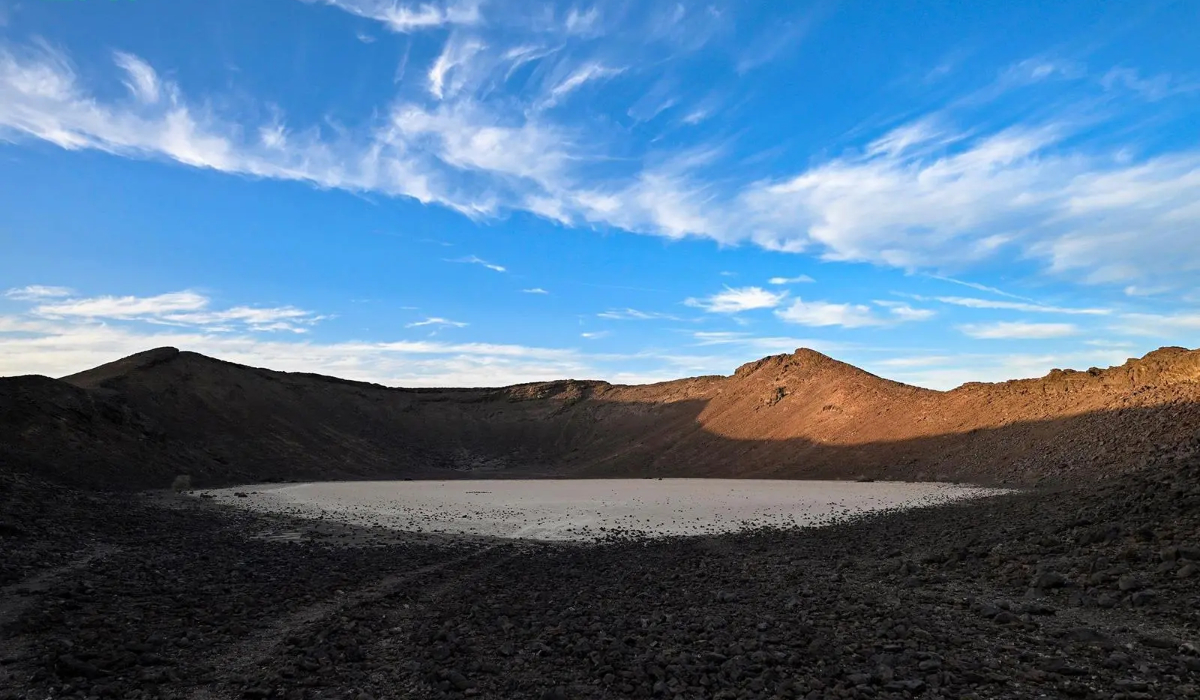
Dr. Hammad Al-Ruwaili, a professor of history and archaeology, said that the history of volcanoes in the Kingdom dates back about 30 million years.
“They formed in two phases. The first phase coincided with the basaltic lava flows and the opening of the Red Sea, and the second phase began with volcanic activity in the Arabian Peninsula about 10 million years ago,” he added.
The most prominent volcanic sites include Hafir Kishb and Al-Malsa volcano on the northern and southern edges of Harrat Rahat in the southeast of Madinah.
Harrat Rahat is the largest volcano by area, followed by Harrat Khaybar, Harrat Al-Harrah, Harrat Nawasif and Harrat Hafir Kishb, which contains the Wahbah Crater, the deepest volcanic crater in the Kingdom with a diameter of 2 km and a depth of more than 220 meters. The site is a popular destination for locals and attracts tourists from around the world.
SPEEDREAD
The most prominent volcanic sites include Hafir Kishb and Al-Malsa volcano on the northern and southern edges of Harrat Rahat in the southeast of Madinah.
In Arabic, Harrat refers to “a land with black stones that seem to have been burned by fire.” The lava fields are named after the intense heat of rocks.
Al-Ruwaili said that volcanoes are classified into several types, including domed, scoria, shield and cratered.
He added that the Hafir Kishb derives its name from Mount Kishb, located about 260 km from the northeastern part of Taif Governorate. The black mountain is visible to the right of those traveling on the Riyadh Road after Al-Muwayh. The area is mostly scattered black rocks interspersed with sandy areas known as Al-Qee’an.
Other notable areas include Dughaybjah, Khawarah, Hafar, Al-Mashubah, Qia, Mraan and Al-Muwayh.
Al-Ruwaili added that east of Hafir Kishb lies a rough harrat which is very difficult to traverse.
Etihad Airways flying high with classic cartoon caper

DUBAI: An Etihad Airways aircraft has been decorated with classic cartoon characters as part of a collaboration with the film and entertainment giant Warner Bros. World.
The Boeing 787-10 Dreamliner will feature favorite Looney Tunes characters on one side of the aircraft and popular DC super heroes on the other.
Passengers up to 10 years of age traveling on Etihad Airways’ longer flights will receive new Warner Bros. World Kids Packs, which include activities designed to entertain and educate, such as drawing their favorite super heroes and engaging in fun tasks throughout the flight.

Infants will receive a DC super hero-themed soft blanket, while older children will receive items such as a branded backpack, superhero cape, water bottle and activity kit.
The aircraft’s maiden flight will be to London Heathrow on Saturday. It will then rotate service to destinations such as Dublin, Amsterdam, Vienna, Bangkok and Manila.
Antonoaldo Neves, CEO of Etihad Airways, said in a statement: “Building on the strong reputation we have built as a family-friendly airline, we’re thrilled to take our partnership with Warner Bros. World to the next level.
“Our Looney Tunes and DC Super Hero-themed aircraft will take our brands to destinations worldwide, promoting one of Abu Dhabi’s many attractions. We look forward to welcoming more and more visitors inspired to visit our home, Abu Dhabi, and in particular delighting our little VIP guests while they journey with us.”
Strawberry picking in Taif serves up a sweet summer escape

- Locations help create jobs during the summer season
TAIF: A strawberry farm in the rugged mountains of Al-Hada in Taif has emerged as a popular spot for visitors looking to escape the summer heat and appreciate the beauty of nature away from the hustle and bustle of city life.
Arab News recently visited the Al-Hada strawberry farm to see how it captures the essence of the region’s natural beauty and vibrant culture.

Located high in Al-Hada’s tourist area, the strawberry farm welcomes visitors all year round. The experience allows visitors to pick fresh berries and feed wildlife such as ducks, geese and parrots to the soothing sound of a nearby waterfall.
Along with a modest garden for birds and a lake for ducks and turtles, the space includes stalls selling ice cream, hot drinks and strawberry juice, among other refreshments. It also features seating areas and a cottage.
HIGHLIGHTS
• Turki Al-Ahmadi, Al-Hada farm’s founder, told Arab News that he had designed the farm in a way that draws visitors beyond harvest season from April to June.
• Entry to the farm in Al-Hada costs SR35 ($9).
Turki Al-Ahmadi, the farm’s founder, told Arab News that he had designed the farm in a way that draws visitors beyond harvest season from April to June. Various facilities to provide fun and relaxation in nature have been installed to this end.

His son, Bandar Al-Ahmadi, said that beside picking strawberries and enjoying the fresh fruit, the family are keen to make the farm a space where adults and children can learn about various types of trees.
The farm showcases models of trees including pomegranate, fig, tangerine, quince, apple and mulberry, with information about their habitat, method of irrigation, places of cultivation, and other key details about their lifespan.
We were told by many relatives who visited the strawberry farm in Al-Hada that their trip to Taif governorate would not be complete if they did not (go for) a strawberry-picking activity.
Hamid Al-Subhi, Visitor
“We were told by many relatives who visited the strawberry farm in Al-Hada that their trip to Taif governorate would not be complete if they did not (go for) a strawberry-picking activity,” Hamid Al- Subhi told Arab News during his visit recently.

Al-Subhi, who drove from Makkah with his family, was fascinated by the farm’s facilities: “Picking your own strawberries at the farm is really something … my kids really enjoyed it and being on the top of the mountain with such a cool weather really makes our visit more enjoyable.”
Abdul Mohsin Al-Qadi, a visitor from Jeddah, said that the strawberry-picking experience was hugely rewarding for him and his family.
“It is a must-visit destination and a breathtaking view,” he said. “This is our first time visiting this farm and we really enjoyed all activities, from handpicking our strawberries to other family-friendly activities at the small garden for birds and the lake of ducks and turtles,” he said. “It is a great way to enjoy the beauty of the area while also learning about local culture and heritage.”
Entry to the farm in Al-Hada costs SR35 ($9). Strawberry farms can also be found in Abha, Hail and Qatif.
Heritage meets urban arts at Asir’s Al-Asabila Palaces

- Locations help create jobs during the summer season
RIYADH: The famous heritage palaces in the Asir region have become tourist destinations, offering a rich blend of history and culture.
The Saudi Press Agency reported that these sites also boost economic activity by creating job opportunities during the summer season.

The Al-Asabila Palaces, which are situated in Al-Namas Governorate some 150 km south of Abha, have become a major attraction. Situated in the heart of Al-Namas, these palaces now draw hundreds of visitors daily, both tourists and locals, according to the SPA. Their popularity has surged following their inauguration by Prince Turki bin Talal bin Abdulaziz, chairman of the Asir Development Authority.
Visitors begin their tour of the palaces by shopping in areas dedicated to traditional fashions, antiques, and gifts that showcase the heritage and arts of the Asir region.
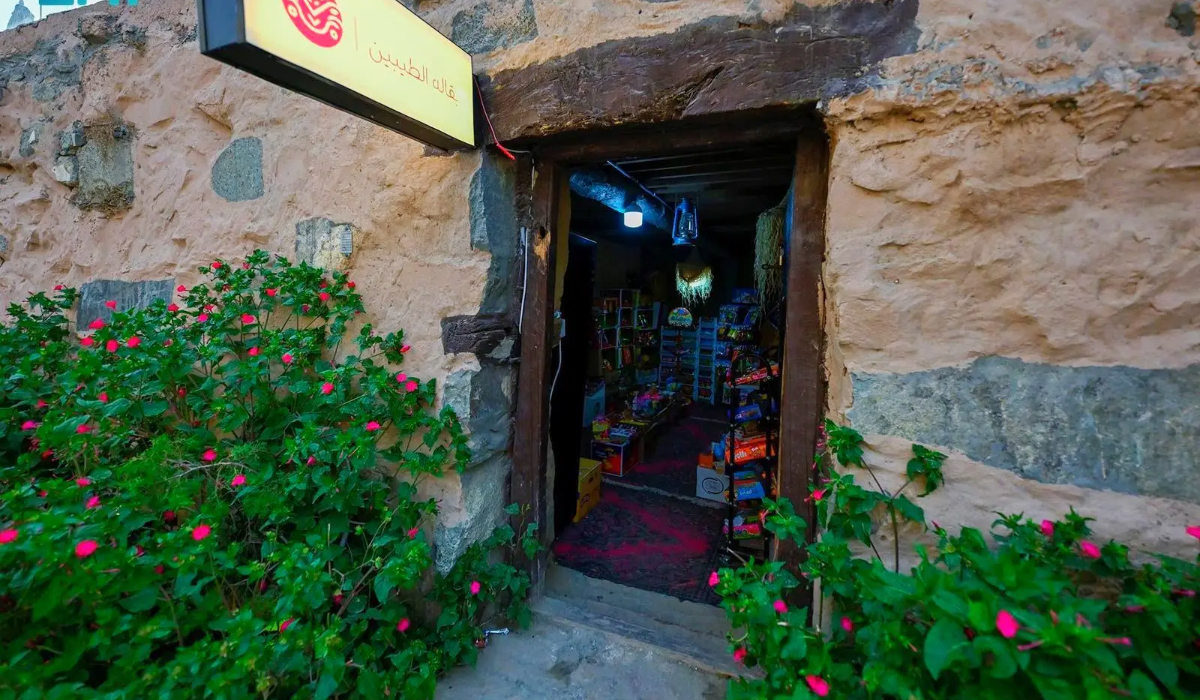
They can then relax with coffee and hot drinks before exploring the Abs Palace, which has been restored to welcome guests.
Tourist guide Saleh Al-Shehri told the SPA: “At the beginning of the Saudi era the palaces served as the headquarters for various government agencies, including the court, and as venues for national events.”
FASTFACTS
• Al-Asabila Palaces are situated in Al-Namas governorate some 150 km south of Abha.
• These palaces now draw hundreds of visitors daily, both tourists and locals, Saudi Press Agency reports.
• The initiative to restore the palaces was taken by their owners and helped transform them into a tourist and cultural attraction, says tour guide.
He added that the initiative to restore the palaces was taken by their owners and helped transform them into a tourist and cultural attraction. This effort aligned with the Kingdom’s Vision 2030, which aims to revitalize the area and boost domestic tourism.
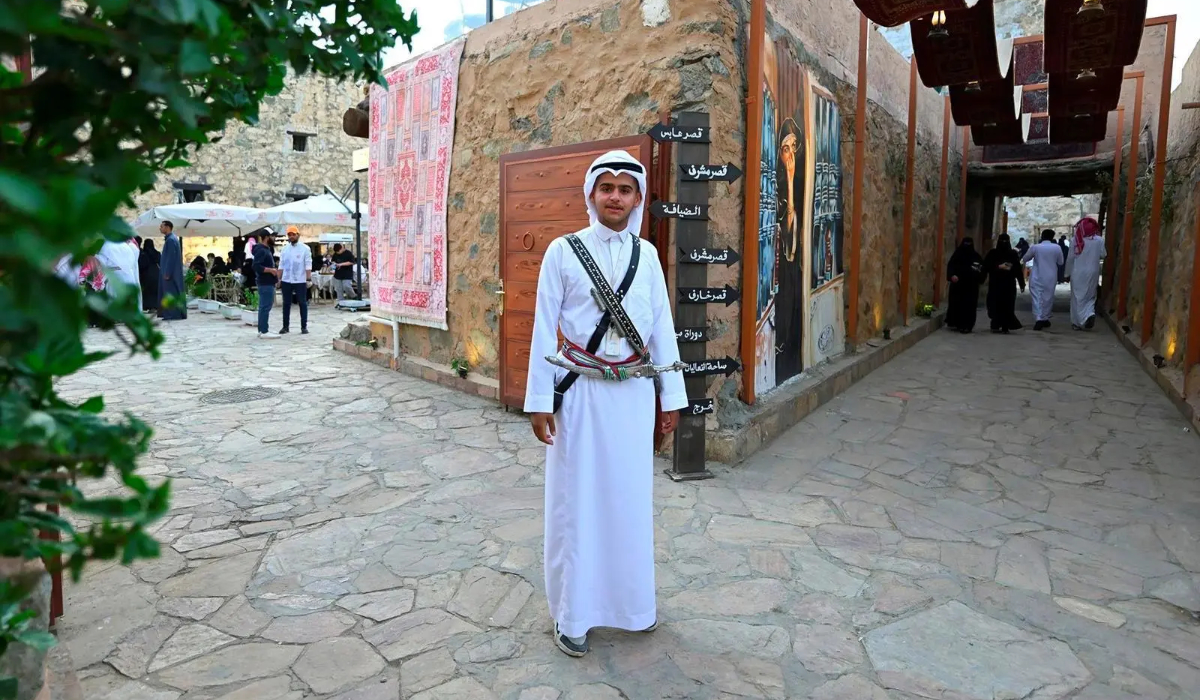
Historian Amr bin Gharamah Al-Amrawi says that Al-Namas was established in 1363-1364. However, it only received the name Al-Namas about 150 years ago, being previously known as Al-Waad village.
It was later named after the trees in the surrounding areas and the adjacent valley, while the presence of a well called Al-Namasa also contributed to the village being renamed Al-Namas.
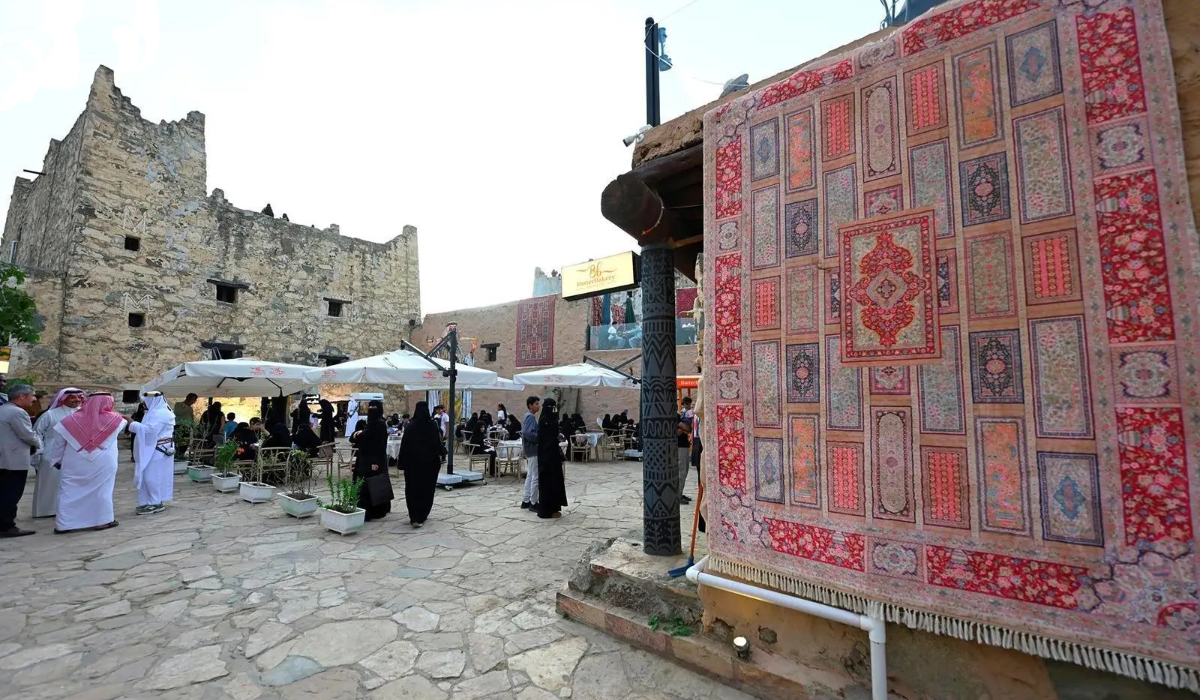
The heritage site features several palaces, including Abs, Mishref, Turban, and Kharif. These structures, which range from two to three floors in height, are examples of the traditional construction style of the Asir region.
The palaces contain 60 rooms and span a total area of about 5,000 sq. meters. The exteriors are of white limestone, extracted from white quartz stone, while the roofs feature wood, leaves, and juniper. The interiors are finished with plaster mixed with clay.
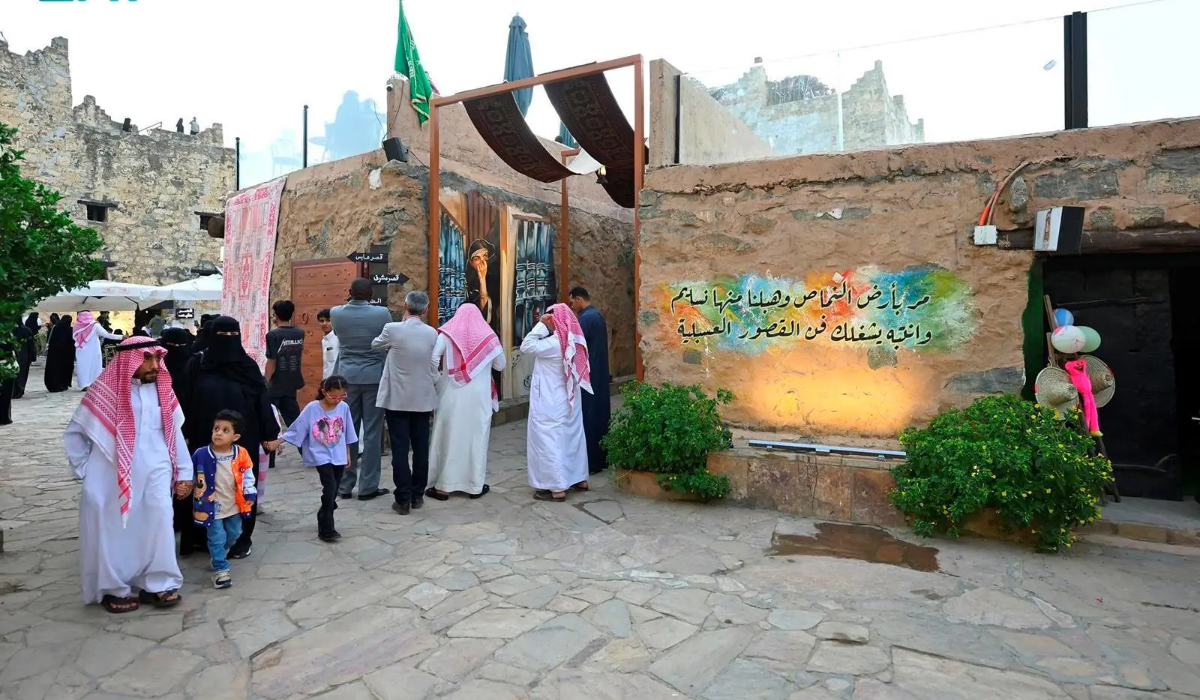
According to the SPA, the area is home to numerous archaeological sites from various periods, the most famous location being Al-Jahwah village, mentioned by the traveler Al-Hamdani, which is located east of the present-day Al-Namas Governorate.
Al-Amrawi added that the governorate contains Islamic inscriptions in mountains known as Al-Sijin, Al-Gharamah, Dhul-Ain, Ajama, and Qarn Al-Ghala.
Saudi Arabia’s Beit Hail festival attracts over 68,000 visitors

- The festival includes folk art performances from the Hail and Yanbu regions, a “Made in Hail” pavilion, and an array of traditional foods prepared using heritage methods
RIYADH: The third Beit Hail heritage festival, themed “Your Home Away From Home,” has attracted more than 68,000 visitors since its opening at Aja Park earlier this month, Saudi Press Agency reported.
The 30-day event has drawn visitors of all ages from the region and beyond, offering a showcase of local culture and traditions.
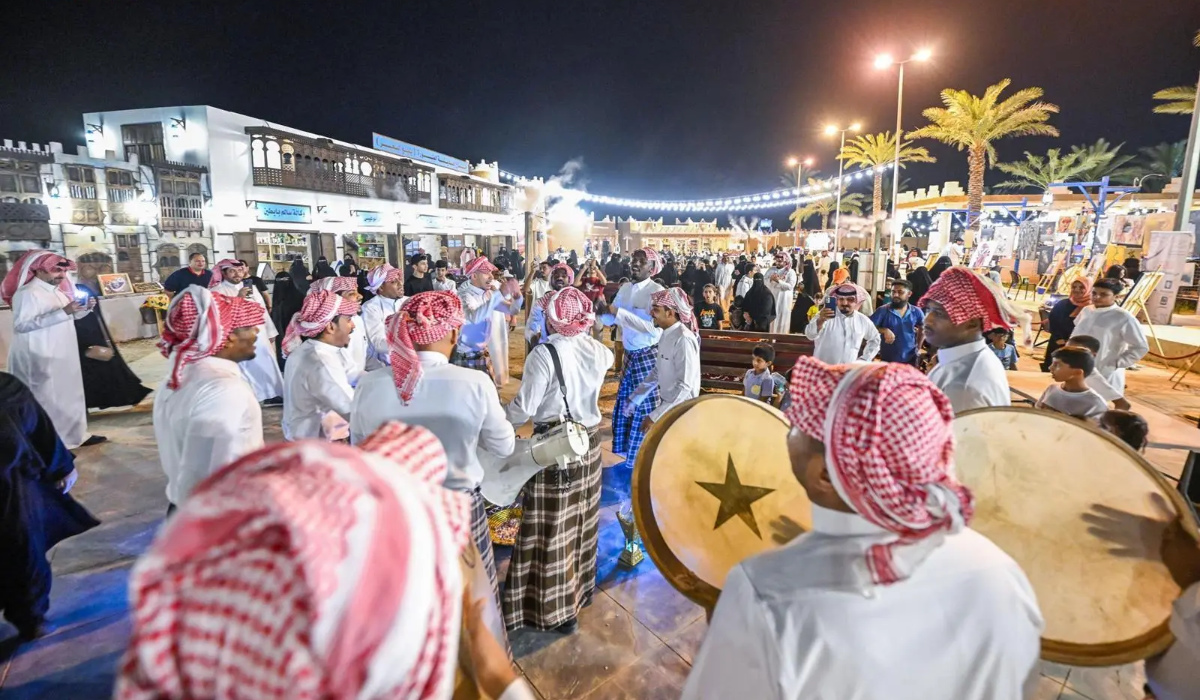
Festival highlights include a Hijazi village exhibit featuring Yanbu’s heritage, alongside live demonstrations of traditional crafts.
Visitors can also observe artisans creating prayer beads, practicing Sadu weaving, crafting leather water bottles, and demonstrating embroidery techniques.
HIGHLIGHT
The 30-day event has drawn visitors of all ages from the region and beyond, offering a showcase of local culture and traditions.
Other showcased skills include hand-woven carpet production, crochet, and the crafting of traditional wooden doors with intricate plaster engravings typical of old Hail residences.
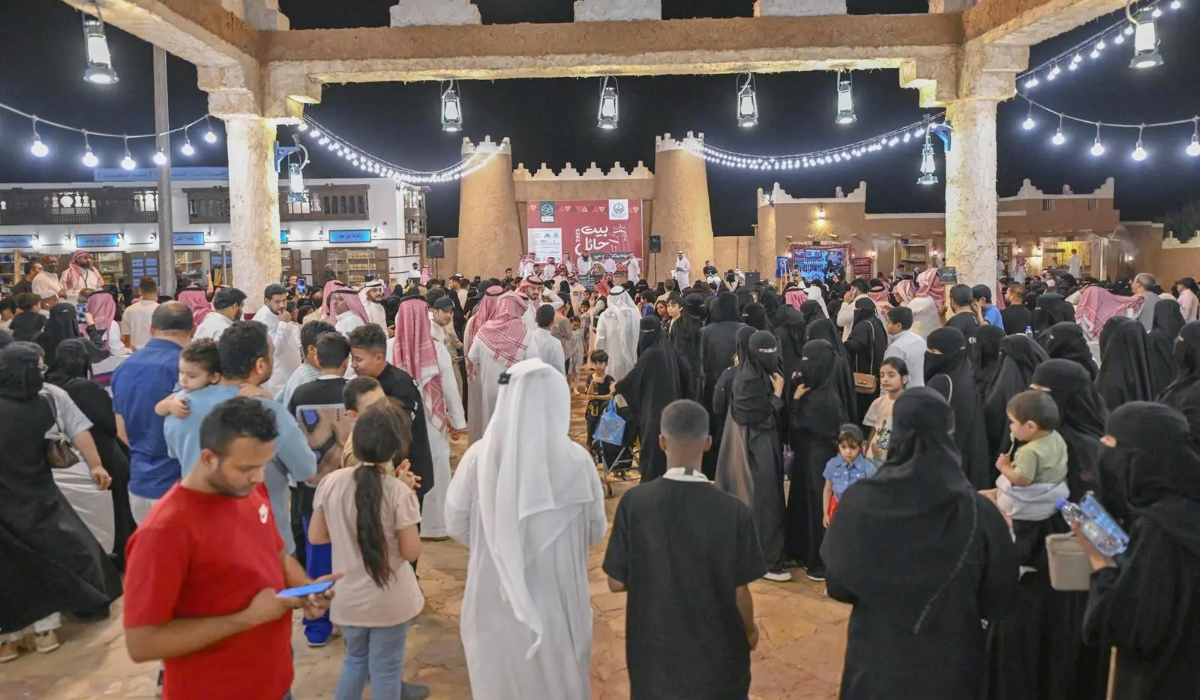
The festival also includes folk art performances from the Hail and Yanbu regions, a “Made in Hail” pavilion, and an array of traditional foods prepared using heritage methods.
Nayef Al-Salhoub, head of the organizing committee, told SPA: “Our goal is to connect younger generations with Saudi Arabia’s rich cultural legacy.”
The event runs daily from 6 p.m. to 1 a.m., featuring a diverse program of folk activities.
Visitors to the festival value the opportunity to explore Saudi Arabia’s ancestral traditions with their children, learning about historical lifestyles and the ingenious use of natural materials in daily life, SPA added.



















